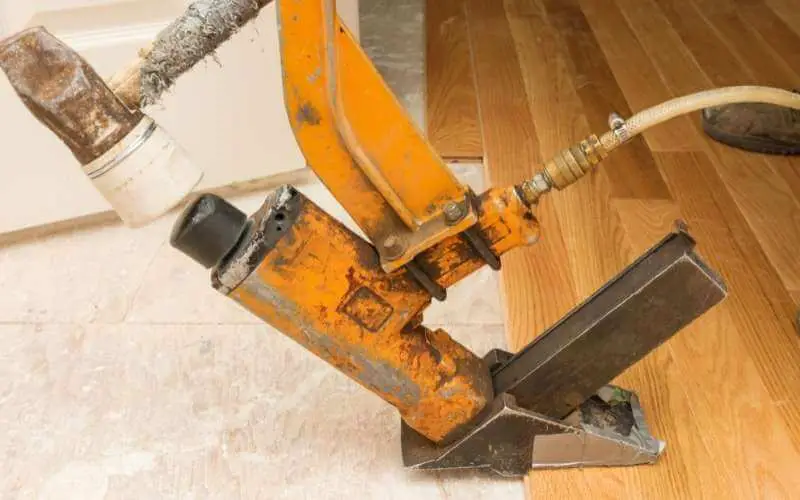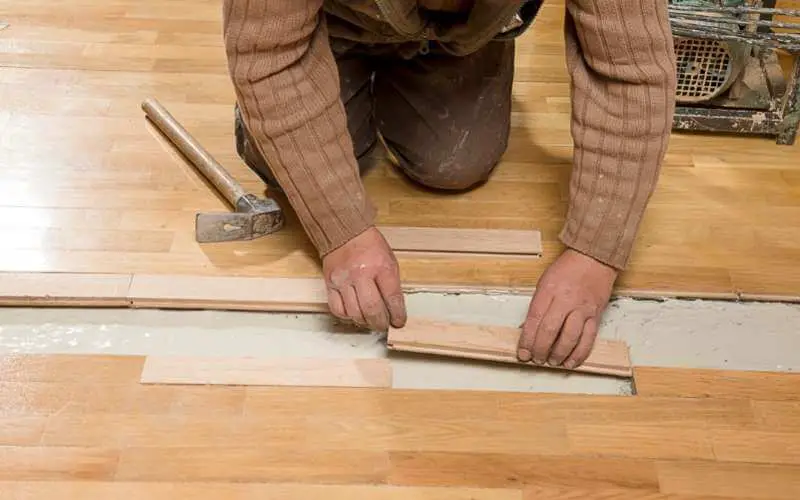If you have detected a little part of your floor which is lifted or has wood planks bulging upward, that is most likely to be a hump in the hardwood floor.
YOu can fix hump in hardwood floor through the floor joist or by getting rid of the sleeper system.
Whether you have intentions to change your already made floor or not, a hump in a hardwood floor will need you to remove the issue before it becomes worse than it already is.
A hump in a hardwood floor can come about for different reasons. For example, the person who built the house might not have appropriately installed the hardwood floor.
Whatever the reason there may be, you have to make amendments to the hardwood floor to preserve your existing floor or ensure that the floor you just installed does not get any more damage in the future.
In this article, we will show you the steps you need to implement to fix that hump in your hardwood floor with ease.
Related: How To Fix Wood Floor Buckling
How to Fix Hump in Hardwood Floor
Table of Contents
If you are fixing a hump in your hardwood floor at home, there are different tools you will need to do that successfully; they include glasses, Ear protection, Chalk line, Circular saw, Sander, Scraper, Shims, Hammer, Nails, OSB, or plywood, and Edger and abrasives.
Once all the tools mentioned here are in place, all you need is the technical know-how. Here are the steps you should take to do this when you are ready:
Carry Out a Measurement of the Floor
First Step
Measure the difference in height, i.e., between the hump and the other part of the floor.
Use a straightedge to give an estimated size of the hump and other high and low of the whole region. You may observe about 3 inches.
Second Step
Get rid of the already made floor. To get rid of the existing floor, employ a circular saw. Cut out only the part where the hump is and not the whole floor.
Third Step
Do a thorough inspection of the hardwood floor to confirm if there is any damage or a method to get rid of the hump without having to cut any further.
Read: How to Fix Swollen Wood Floor
Getting Rid of a Hump with Sleeper System
First Step
When discussing how to fix hump in hardwood floors, the first thing that comes to mind is lose the sleeper system.
A sleeper system can be found right under the hardwood floor. It is the area between the subfloor and floor, and it can have a height of about 1/2 inch.
Second Step
Tidy up the area. Get rid of any debris, nails, and sleepers from that part
Third step
Apply shims on the hardwood floor. Nail the shims every 12-14 inches down the already opened floor.
Compile them together until it reaches the height you prefer, leaving a minimum of 1/2 inch for the top of the hardwood floor. The desired height.
Fourth Step
Position the plywood over the shims and use the chalk line to confirm the equity of the new floor. After that, nail the plywood onto the floor.
Fifth Step
Use an edger to smoothen the plywood with the already made subfloor and run the edger over the areas.
Sixth Step
After following all the steps above, fix the new floor over the subfloor.
How to Remove a Hump with a Joist Problem
First Step
Trim off the subfloor and use a circular saw to get rid of the subfloor and open up the high joist.
Second Step
Examine the joist. The joist under the hump may look thicker than the joist on either side of it due to its moisture.
Third Step
Trim down the higher joist to make it equal in height with the others.
Fourth Step
Make an installation of the subfloor by positioning the plywood over the joists and nailing it down. After you have done this, position the new floor over the subfloor
Read: How to Fix Squeaky Hardwood Floors With Baby Powder
Conclusion
When a floor joist is very long and is longer than the center beam, it can lead to a hump in the floor and for this reason and many more we extensively dealt with how to fix hump in hardwood floors.
A wood floor joist will deflect or sag close to the middle of the joist underneath the weight of the flooring and furniture.

